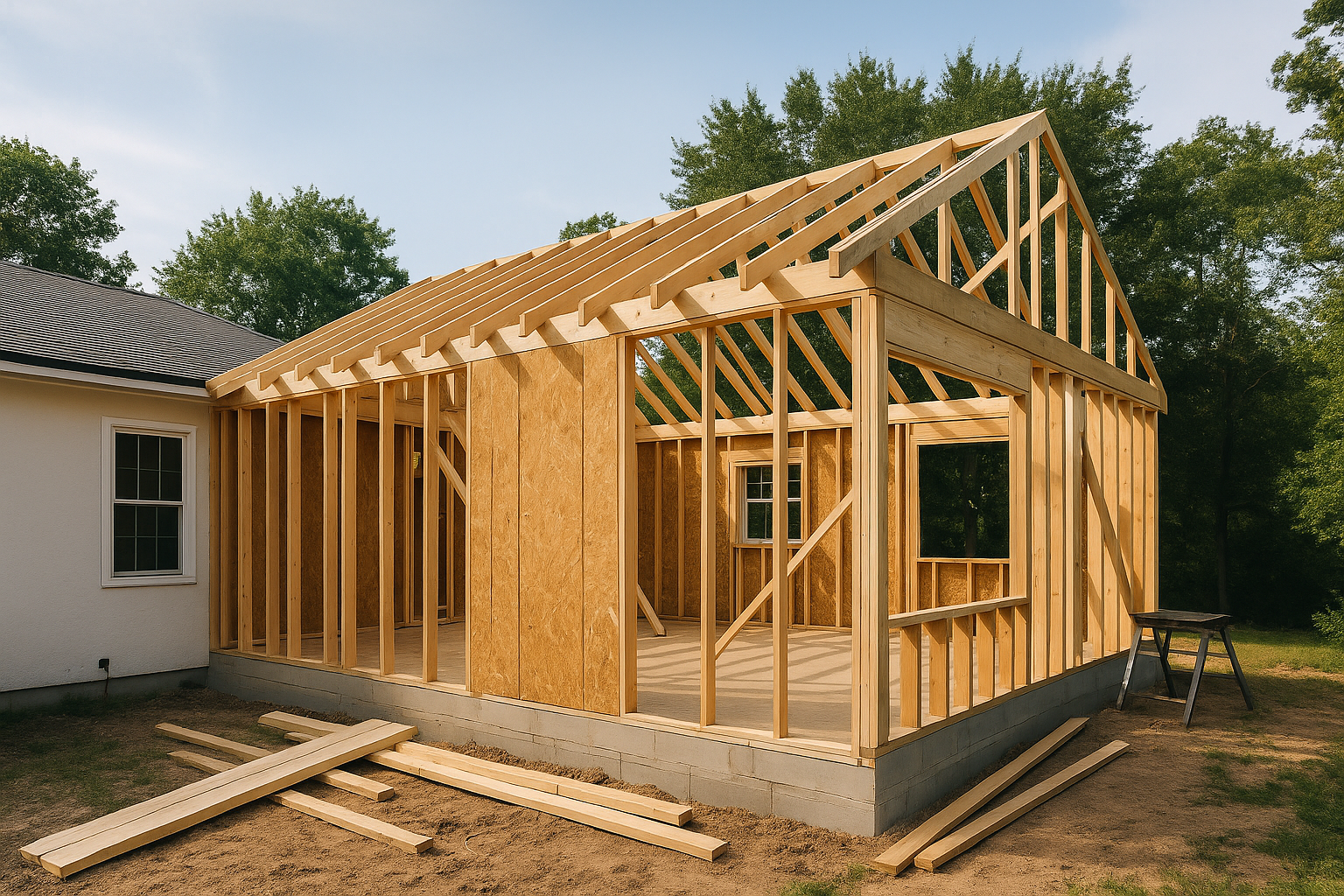Remodeling in Florida comes with its own set of unique challenges — and one of the most important (but least understood) is the 50% Rule. If you’ve never heard of it before, you’re not alone. Many homeowners are caught off guard when they discover their remodel triggers requirements that can double, or even triple, their project costs.
At Avery Construction, we believe knowledge is power. The more you understand Florida’s building codes, the smoother your project will be — and the less likely you are to face costly delays. In this blog, we’ll break down the 50% Rule in plain English, explain why it matters, and share how the right contractor can help you avoid expensive surprises.
What is Florida’s 50% Rule?
The 50% Rule is part of Florida’s compliance with FEMA’s National Flood Insurance Program (NFIP). In simple terms:.png?width=200&height=200&name=Avery%20Socials%20(83).png)
-
If the cost of your remodeling or renovation project equals or exceeds 50% of your home’s current market value (excluding the land), your home is considered a “substantial improvement.”
-
When this threshold is reached, your entire home must be brought into compliance with current floodplain management regulations.
That often means elevating the structure, upgrading foundations, replacing systems, and ensuring the home meets modern flood and safety standards.
Why the 50% Rule Exists
Florida is one of the most flood-prone states in the country. FEMA designed the rule to ensure homes in flood zones are gradually upgraded to meet modern safety standards, rather than allowing unsafe, outdated structures to remain vulnerable.
While the rule protects homeowners and communities, it can have major financial implications for anyone planning a remodel.
How the 50% Rule Affects Remodeling Projects in 2025
Let’s imagine:
-
Your home is valued at $300,000 (not including land).
-
You plan a $175,000 remodel.
.png?width=300&height=300&name=Avery%20Socials%20(76).png) Because $175,000 is over 50% of $300,000, your project would be classified as a substantial improvement. That means you may be required to:
Because $175,000 is over 50% of $300,000, your project would be classified as a substantial improvement. That means you may be required to:
-
Elevate your home to meet current base flood elevation (BFE) requirements
-
Upgrade structural components like foundations or framing
-
Replace outdated mechanical, electrical, and plumbing systems
-
Comply with stricter energy and hurricane protection standards
This can quickly transform what you thought was a straightforward remodel into a far more complex — and costly — project.
Why Transparency from Contractors Matters
One of the most frustrating things for homeowners is discovering this after the design phase — or worse, halfway through construction. Unfortunately, some contractors either:
-
Don’t fully understand the rule, or
-
Avoid mentioning it to keep their initial estimate looking “low.”
At Avery Construction, we believe that’s unacceptable. Transparency is non-negotiable.
When you request an estimate from us, we:
-
Research your property’s flood zone and valuation upfront.
-
Calculate whether your project may trigger the 50% Rule.
-
Explain what compliance would mean in terms of cost, timeline, and feasibility.
This way, you can make an informed decision before committing. It’s not just about budgets — it’s about your family’s safety and ensuring the job is even possible within code.
Frequently Asked Questions About the 50% Rule
-
1. How do I know if my home is in a flood zone?
-
You can check FEMA’s Flood Map Service Center or contact your local county building department. Your contractor should also verify this.
-
2. Does the 50% Rule apply to all renovations?
-
Yes, it applies to both residential and commercial properties located in flood hazard areas.
-
3. What if my remodel is less than 50%?
-
If your remodel is under the threshold, you can typically move forward without triggering full compliance. However, future projects will be added together — so multiple smaller projects can eventually add up.
-
4. Are there exceptions?
-
Some maintenance and minor improvements may not count toward the 50%. But major upgrades like kitchens, bathrooms, additions, or structural changes almost always do.
How to Plan Your Remodel Around the 50% Rule
-
Get an accurate property valuation – The threshold is based on your property’s assessed or appraised value (excluding land).
-
Plan with a contingency – If you’re close to the 50% mark, budget for compliance just in case.
-
Hire an experienced contractor – Choose a builder who understands FEMA codes and local permitting processes.
-
Demand transparency – Insist on estimates that outline whether your project is near or over the threshold.
Why This Matters in 2025
Florida’s building landscape is evolving rapidly. With stronger storms, rising insurance costs, and tighter code enforcement, the 50% Rule is being applied more rigorously than ever in 2025. Homeowners who plan without considering it risk delays, fines, and projects that stall halfway through.
Final Thoughts
The 50% Rule can feel intimidating — but it doesn’t have to derail your dream remodel. The key is planning with the right partner.
At Avery Construction, we’ve guided countless homeowners through this process with clarity and confidence. By being transparent from the very first estimate, we ensure you know exactly what’s possible, what’s safe, and what will deliver lasting value.
📞 Thinking about remodeling in 2025? Contact Avery Construction today for a free same-day estimate — and let’s make sure your project is code-smart, safe, and built to last.
.png)

.png)